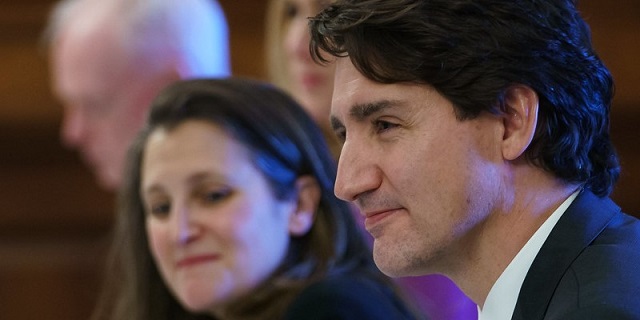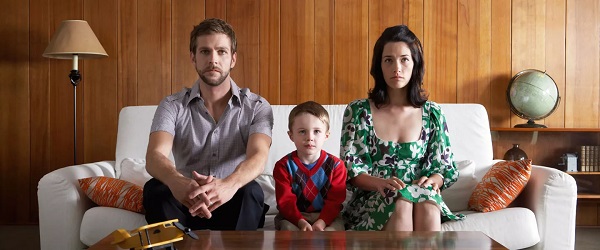Economy
400,000 more Canadians live in poverty now compared to 2020: gov’t report

From LifeSiteNews
A report by the federal government has found that ‘9.9 percent of Canadians, some four million people, live in poverty compared to 6.4 percent in 2020, the equivalent of approximately 400,000 more Canadians.’
Decades of progress in lowering the poverty rate in Canada has been wiped out in the last few years under Prime Minister Justin Trudeau’s Liberal government, one of his own federal departments has reported.
According to Blacklock’s Reporter, a recently released report dated December 11, 2023 by the Department of Social Development “estimates” that “9.9 percent of Canadians, some four million people, live in poverty compared to 6.4 percent in 2020, the equivalent of ‘approximately 400,000 more Canadians,’” and that “[f]uture increases in the rate of poverty could stall progress towards reaching the 2030 poverty reduction target of a 50 percent reduction in poverty versus 2015 levels.”
The report observed that high inflation in Canada combined with “lagging household incomes” has led to “affordability pressures among many households.”
While the uptick in the poverty rate is certainly concerning for many Canadians, it may come as little surprise as this is not the first time one of Trudeau’s own departments has warned of such a trend.
In January, the National Advisory Council on Poverty (NACP) observed to Parliament that fast-rising food costs have led to many people feeling a sense of “hopelessness and desperation.”
“Persons with lived expertise of poverty and service providers alike told us things seem worse now than they were before and during the first years of the pandemic,” read the NACP report.
“We heard that people are worried about the rising cost of living and inflation,” it continued, adding, “More people are in crisis and these crises are more visible in our communities.”
The damning figures comes as critics, including the nation’s leading taxpayer watchdog, the Canadian Taxpayers Federation, have warned that the Trudeau government’s deficit spending and oft-increasing tax regime has been putting undue strain on the pocketbooks of its citizens.
Previously speaking to LifeSiteNews, CTF federal director Franco Terrazzano urged the Trudeau government to cut spending, balance the budget and “completely scrap” the “carbon tax.”
“More debt means more money wasted on interest charges and less room to cut taxes,” Terrazzano stated, warning that “[i]n a handful of years, every penny collected from the GST (Goods and Service Tax) will go toward paying interest on the debt.”
Under Trudeau, Canadians have seen their overall tax rate go up thanks to the punitive carbon tax that affects all goods and services in the nation.
Even the Bank of Canada, the nation’s central bank, has taken issue with Trudeau government policy, acknowledging last year that some of its federal “climate change” programs, which have been deemed “extreme” by provincial leaders, are helping to fuel inflation.
Bjorn Lomborg
Net zero’s cost-benefit ratio is CRAZY high

From the Fraser Institute
The best academic estimates show that over the century, policies to achieve net zero would cost every person on Earth the equivalent of more than CAD $4,000 every year. Of course, most people in poor countries cannot afford anywhere near this. If the cost falls solely on the rich world, the price-tag adds up to almost $30,000 (CAD) per person, per year, over the century.
Canada has made a legal commitment to achieve “net zero” carbon emissions by 2050. Back in 2015, then-Prime Minister Trudeau promised that climate action will “create jobs and economic growth” and the federal government insists it will create a “strong economy.” The truth is that the net zero policy generates vast costs and very little benefit—and Canada would be better off changing direction.
Achieving net zero carbon emissions is far more daunting than politicians have ever admitted. Canada is nowhere near on track. Annual Canadian CO₂ emissions have increased 20 per cent since 1990. In the time that Trudeau was prime minister, fossil fuel energy supply actually increased over 11 per cent. Similarly, the share of fossil fuels in Canada’s total energy supply (not just electricity) increased from 75 per cent in 2015 to 77 per cent in 2023.
Over the same period, the switch from coal to gas, and a tiny 0.4 percentage point increase in the energy from solar and wind, has reduced annual CO₂ emissions by less than three per cent. On that trend, getting to zero won’t take 25 years as the Liberal government promised, but more than 160 years. One study shows that the government’s current plan which won’t even reach net-zero will cost Canada a quarter of a million jobs, seven per cent lower GDP and wages on average $8,000 lower.
Globally, achieving net-zero will be even harder. Remember, Canada makes up about 1.5 per cent of global CO₂ emissions, and while Canada is already rich with plenty of energy, the world’s poor want much more energy.
In order to achieve global net-zero by 2050, by 2030 we would already need to achieve the equivalent of removing the combined emissions of China and the United States — every year. This is in the realm of science fiction.
The painful Covid lockdowns of 2020 only reduced global emissions by about six per cent. To achieve net zero, the UN points out that we would need to have doubled those reductions in 2021, tripled them in 2022, quadrupled them in 2023, and so on. This year they would need to be sextupled, and by 2030 increased 11-fold. So far, the world hasn’t even managed to start reducing global carbon emissions, which last year hit a new record.
Data from both the International Energy Agency and the US Energy Information Administration give added cause for skepticism. Both organizations foresee the world getting more energy from renewables: an increase from today’s 16 per cent to between one-quarter to one-third of all primary energy by 2050. But that is far from a transition. On an optimistically linear trend, this means we’re a century or two away from achieving 100 percent renewables.
Politicians like to blithely suggest the shift away from fossil fuels isn’t unprecedented, because in the past we transitioned from wood to coal, from coal to oil, and from oil to gas. The truth is, humanity hasn’t made a real energy transition even once. Coal didn’t replace wood but mostly added to global energy, just like oil and gas have added further additional energy. As in the past, solar and wind are now mostly adding to our global energy output, rather than replacing fossil fuels.
Indeed, it’s worth remembering that even after two centuries, humanity’s transition away from wood is not over. More than two billion mostly poor people still depend on wood for cooking and heating, and it still provides about 5 per cent of global energy.
Like Canada, the world remains fossil fuel-based, as it delivers more than four-fifths of energy. Over the last half century, our dependence has declined only slightly from 87 per cent to 82 per cent, but in absolute terms we have increased our fossil fuel use by more than 150 per cent. On the trajectory since 1971, we will reach zero fossil fuel use some nine centuries from now, and even the fastest period of recent decline from 2014 would see us taking over three centuries.
Global warming will create more problems than benefits, so achieving net-zero would see real benefits. Over the century, the average person would experience benefits worth $700 (CAD) each year.
But net zero policies will be much more expensive. The best academic estimates show that over the century, policies to achieve net zero would cost every person on Earth the equivalent of more than CAD $4,000 every year. Of course, most people in poor countries cannot afford anywhere near this. If the cost falls solely on the rich world, the price-tag adds up to almost $30,000 (CAD) per person, per year, over the century.
Every year over the 21st century, costs would vastly outweigh benefits, and global costs would exceed benefits by over CAD 32 trillion each year.
We would see much higher transport costs, higher electricity costs, higher heating and cooling costs and — as businesses would also have to pay for all this — drastic increases in the price of food and all other necessities. Just one example: net-zero targets would likely increase gas costs some two-to-four times even by 2030, costing consumers up to $US52.6 trillion. All that makes it a policy that just doesn’t make sense—for Canada and for the world.
2025 Federal Election
POLL: Canadians want spending cuts

 By Gage Haubrich
By Gage Haubrich
The Canadian Taxpayers Federation released Leger polling showing Canadians want the federal government to cut spending and shrink the size and cost of the bureaucracy.
“The poll shows most Canadians want the federal government to cut spending,” said Gage Haubrich, CTF Prairie Director. “Canadians know they pay too much tax because the government wastes too much money.”
Between 2019 and 2024, federal government spending increased 26 per cent even after accounting for inflation. Leger asked Canadians what they think should happen to federal government spending in the next five years. Results of the poll show:
- 43 per cent say reduce spending
- 20 per cent say increase spending
- 16 per cent say maintain spending
- 20 per cent don’t know
The federal government added 108,000 bureaucrats and increased the cost of the bureaucracy 73 per cent since 2016. Leger asked Canadians what they think should happen to the size and cost of the federal bureaucracy. Results of the poll show:
- 53 per cent say reduce
- 24 per cent say maintain
- 4 per cent say increase
- 19 per cent don’t know
Liberal Leader Mark Carney promised to “balance the operating budget in three years.” Leger asked Canadians if they believed Carney’s promise to balance the budget. Results of the poll show:
- 58 per cent are skeptical
- 32 per cent are confident
- 10 per cent don’t know
“Any politician that wants to fix the budget and cut taxes will need to shrink the size and cost of Ottawa’s bloated bureaucracy,” Haubrich said. “The polls show Canadians want to put the federal government on a diet and they won’t trust promises about balancing the budget unless politicians present credible plans.”
-

 2025 Federal Election18 hours ago
2025 Federal Election18 hours agoOttawa Confirms China interfering with 2025 federal election: Beijing Seeks to Block Joe Tay’s Election
-

 Energy1 day ago
Energy1 day agoIndigenous-led Projects Hold Key To Canada’s Energy Future
-

 Energy1 day ago
Energy1 day agoMany Canadians—and many Albertans—live in energy poverty
-

 2025 Federal Election17 hours ago
2025 Federal Election17 hours agoHow Canada’s Mainstream Media Lost the Public Trust
-

 Business1 day ago
Business1 day agoCanada Urgently Needs A Watchdog For Government Waste
-

 2025 Federal Election7 hours ago
2025 Federal Election7 hours agoBREAKING: THE FEDERAL BRIEF THAT SHOULD SINK CARNEY
-

 International1 day ago
International1 day agoPope Francis has died aged 88
-

 2025 Federal Election17 hours ago
2025 Federal Election17 hours agoReal Homes vs. Modular Shoeboxes: The Housing Battle Between Poilievre and Carney






